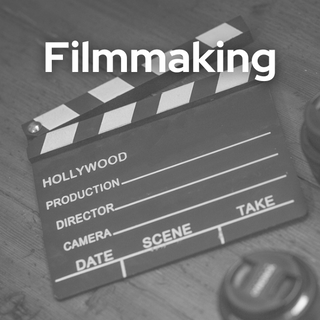Using NDI For Your Podcasts
NDI has proven again just how amazing it is with integrating into both live and pre-recorded podcasts online. Be it used for small start ups, or professional podcasters, NDI is a fantastic solution to help keep costs down, and improve your presentations.
What Happened?
My side company AN Productions often does live podcasts usually the first Saturday of every month. These shows often involve bringing in a guest and we discuss miscellaneous things or a specific topic.
In this case, it was the latest (and final) Evangelion film to be released. We still use Skype for sending video signals to our live mixing software. This can also be done in Teams the same way since both have an NDI feature built right into them for NDI broadcasting.
What makes this so special is what you can chose for a video feed being sent to your mixing software. For example, it can be either a specific speaker, or active speaker (meaning it will cut back and forth between who is speaking).
Personally, I like bringing in the specific guests individually to ensure I have full control via the mixing software. But if you're limited on mixing skills, putting it on active speaker can help you quite a bit as the feed will naturally display whomever is currently speaking.
To coincide with this, it is important to download NDI Tools from ndi.tv. It is 100% free and comes with the codecs needed to truly get up and running. Once installed, I opened Studio Monitor, which shows all my NDI feeds I have over my network. In this case, I have an individual NDI feed for each speaker and a virtual output from my mixing software so the guests can see what they look like and what the audience is seeing.

What came in handy here is that I was able to use Studio Monitor to record my guest's ISO and his audio within one MOV file. So while I was recording myself and the output of the show, I was also recording my guest giving me the full range I needed for post production.
Here is what my timeline in Vegas Pro looked like when i finished editing with the stream's output, my guest's IOS, and my ISO.

These ISO had little for compression as well letting me go in and do some minor color correction too. I even noticed my camera was slightly out of focus. usually this would be a death sentence, but because the compression on the ISO recordings was minimal, I was able to pull it into Adobe Premiere, do a quick mask around myself, and sharpen the image. While I don't recommend doing this all the time, it was quite a relief knowing my files had the data available to let me pull out the information.
That's exactly what happened here. Never had our virtual sets, nor guests, have come in so clear, and it is all thanks to NDI.
What Video Mixing Software can both receive and send NDI signals?
The most common one, and the one I tend to recommend for beginners is OBS, which is a free software. You can easily then install the NDI plugin (also free) for OBS to unlock these features.
VMix also had NDI capabilities and might be something worth checking out.
However, it was Wirecast which Videoguys used during the height of the Pandemic. The host would be brought in via NDI and then the stream would be outputted to YouTube and Facebook. But the host could see himself back via an NDI Virtual Output. Wirecast offers an assortment of features OBS does not, and you can learn more about them here.
Wirecast is also available for Windows and Macs.
In Conclusion
NDI can bring your live and post production podcasts to the next level bringing in virtual guests with ease! No more awkward screen captures and poor resolution video capture. Now it is easy to get and send HD video without breaking the bank.
Check out Videoguys' great webinar introducing NDI 5 right here to learn more!











Leave a comment
Please note, comments must be approved before they are published
This site is protected by hCaptcha and the hCaptcha Privacy Policy and Terms of Service apply.